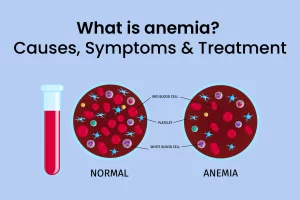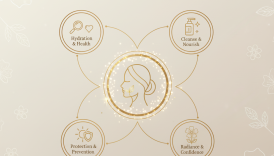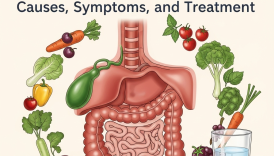Understanding Anemia: Causes, Symptoms, and Treatment

Anemia is one of the most common blood disorders worldwide, affecting millions of people each year. It occurs when the body does not have enough healthy red blood cells or hemoglobin to carry oxygen to tissues and organs. Without sufficient oxygen, the body cannot function properly, leading to fatigue, weakness, and a range of other health issues.
- Understanding Anemia: Causes, Symptoms, and Treatment
- What Is Anemia?
- Common Symptoms of Anemia
- What Causes Anemia?
- Best Foods to Prevent Anemia
- How Is Anemia Diagnosed?
- Final Thoughts
In this article, we’ll explore what anemia is, its main symptoms, common causes, and how it can be diagnosed and prevented.
What Is Anemia?
Anemia is defined as a condition in which the hemoglobin concentration in the blood falls below the normal range. For women, normal levels are around 12 g/dL, while in men, they are 13 g/dL. If these levels drop below the threshold, anemia is diagnosed.

Common Symptoms of Anemia
Recognizing the early signs of anemia is important for timely treatment. The most common symptoms include:
- Shortness of breath and fatigue
- Dizziness and headaches
- Hair loss and pale skin
- Cold hands and feet
- Sleep problems and difficulty concentrating
- Brittle nails
- Irritability, nervousness, and mood swings
If these symptoms persist, consulting a doctor is crucial.
What Causes Anemia?
There are several reasons why anemia can develop. The most common causes include:
- Iron deficiency – due to poor diet or blood loss
- Vitamin deficiencies – especially Vitamin B12 and folic acid
- Heavy menstrual bleeding
- Chronic diseases such as ulcers or intestinal bleeding
- Pregnancy
- Genetic conditions or problems with blood clotting
Without sufficient iron and vitamins, the body cannot produce enough healthy red blood cells, which leads to anemia.
Best Foods to Prevent Anemia
A healthy diet plays a key role in preventing and managing anemia. Foods rich in iron and vitamins include:
- Red meat, chicken, and liver
- Dried fruits (raisins, apricots)
- Leafy green vegetables (spinach, kale)
- Carrots, beans, and lentils
- Seafood
- Citrus fruits and pomegranate
Incorporating these foods into your diet supports red blood cell production and improves overall health.
How Is Anemia Diagnosed?
Doctors diagnose anemia through a clinical examination and a complete blood count (CBC) test. This test measures the hemoglobin concentration in the blood. If the values are lower than normal, anemia is confirmed. Early diagnosis is important to prevent further complications.
Final Thoughts
Anemia may seem like a simple condition, but if left untreated, it can have serious consequences. Paying attention to your diet, recognizing the symptoms early, and seeking medical advice are key steps in preventing and managing anemia.
If you suspect you may have anemia, consult your healthcare provider for proper testing and treatment options.






